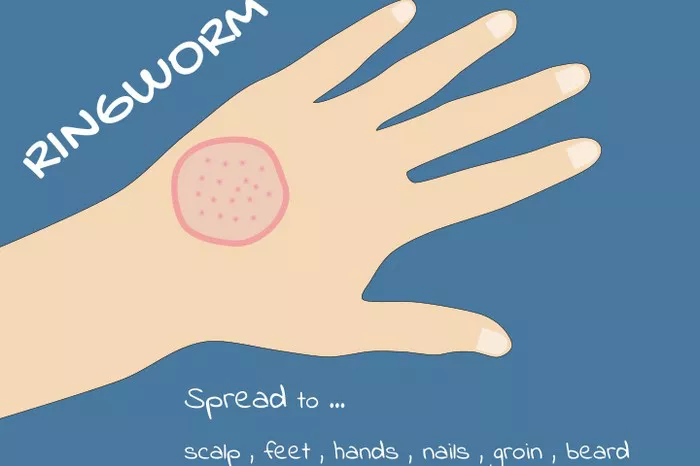Ringworm, despite its misleading name, is not caused by a worm but by a fungus. Also known as dermatophytosis, this common fungal infection affects the skin, scalp, and nails. While it may not be life-threatening, its stubborn persistence and discomfort make finding a permanent cure a pressing concern for many. In this article, we delve into the complexities of ringworm treatment, exploring whether a permanent solution exists.
Understanding Ringworm: Causes and Symptoms
Dermatophytes, the fungi responsible for ringworm, thrive in warm and moist environments, making them particularly prevalent in locker rooms, swimming pools, and communal showers. These fungi can also be transmitted through direct contact with infected individuals or contaminated surfaces. Once they infiltrate the skin, hair, or nails, they cause the characteristic red, itchy, and often circular rashes associated with ringworm.
Conventional Treatments: The Quest for Eradication
Traditional approaches to ringworm treatment typically involve antifungal medications, either in topical form for mild cases or orally for more severe infections. Common antifungal agents include clotrimazole, miconazole, terbinafine, and griseofulvin. These medications work by inhibiting the growth and spread of the fungi, gradually clearing the infection over several weeks.
In addition to pharmaceutical interventions, maintaining good hygiene practices and keeping the affected area clean and dry are crucial for preventing the spread of ringworm. Avoiding sharing personal items such as towels, clothing, and grooming tools can also reduce the risk of transmission.
The Challenge of Recurrence
Despite the effectiveness of conventional treatments, recurrence remains a significant challenge in managing ringworm. Even after apparent clearance, the fungus may lie dormant in the skin or nails, resurfacing under favorable conditions. Factors such as compromised immune function, prolonged exposure to moisture, and inadequate treatment compliance can all contribute to recurrence.
Moreover, misdiagnosis or incomplete eradication of the fungal infection can lead to persistent or recurring symptoms. In such cases, the cycle of treatment and relapse becomes frustrating for both patients and healthcare providers.
Exploring Alternative Therapies
Given the limitations of conventional treatments, many individuals turn to alternative therapies in search of a permanent solution for ringworm. These may include natural remedies such as tea tree oil, garlic, apple cider vinegar, and coconut oil, which are believed to possess antifungal properties. While some anecdotal evidence supports their efficacy, scientific studies validating their effectiveness in treating ringworm are limited.
Other alternative approaches involve dietary modifications, probiotic supplementation, and immune-boosting herbs to strengthen the body’s natural defense mechanisms against fungal infections. While these strategies may contribute to overall health and immune function, their specific impact on ringworm eradication remains uncertain.
Addressing Underlying Factors
In the quest for a permanent cure for ringworm, addressing underlying factors that predispose individuals to fungal infections is paramount. Certain medical conditions, such as diabetes and HIV/AIDS, weaken the immune system, making individuals more susceptible to opportunistic infections like ringworm. Similarly, poor hygiene practices, excessive sweating, and prolonged exposure to damp environments create an ideal breeding ground for dermatophytes.
By adopting a holistic approach that encompasses lifestyle modifications, dietary adjustments, and stress management techniques, individuals can bolster their immune system and reduce their vulnerability to recurrent ringworm infections.
The Role of Prevention
While the pursuit of a permanent cure for ringworm continues, prevention remains the cornerstone of effective management. Educating individuals about the importance of personal hygiene, avoiding sharing personal items, and promptly treating fungal infections can significantly reduce the incidence and spread of ringworm.
In environments where ringworm is prevalent, implementing stringent hygiene protocols, regular cleaning and disinfection of communal areas, and providing access to antifungal products can help curb transmission. Furthermore, early detection and prompt treatment of ringworm cases can prevent the escalation of the infection and minimize the risk of recurrence.
Conclusion
The quest for a permanent cure for ringworm remains an ongoing challenge, fueled by the persistent nature of the fungal infection and the complexities of its treatment. While conventional antifungal medications offer effective symptom relief, recurrence and incomplete eradication continue to plague many individuals.
Exploring alternative therapies, addressing underlying factors, and prioritizing prevention are integral components of a comprehensive approach to ringworm management. By combining conventional treatments with holistic strategies aimed at strengthening the body’s defenses and minimizing risk factors, individuals can navigate the path to permanent relief from this common fungal infection.
As research into novel antifungal agents and therapeutic modalities advances, the prospect of achieving a lasting solution for ringworm grows ever closer. Until then, a multifaceted approach that emphasizes prevention, early intervention, and patient education remains our most powerful weapon in the fight against dermatophytosis.
























